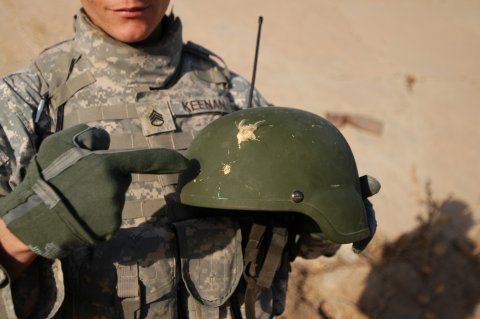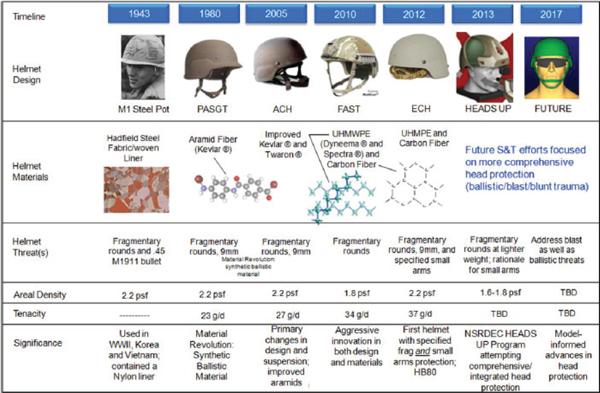|
|
|
The Physics
Today's Combat helmets are composed of a mixture of carbon fiber and other synthetic materials woven together in multiple layers that prevent projectiles form getting through by absorbing the kinetic energy, spreading it to protect the wearer, and then diverting the projectile out of the helmet. For example, a solder takes a direct hit, the bullet goes through the first layer, but doesn't have enough energy to continue so it travels along the layer and makes its way back out of the helmet (see example picture below).  Image source-http://static1.businessinsider.com/image/57b5dfcece38f284328b761a-480/army-ach-helmet.jpg As you can see, there are two
holes in the helmet, one from where the bullet
entered the helmet and then one from where the
bullet left the helmet. In this case, the round
hit and went through one woven layer, but did not
have enoug kinetic energy to penetrate another
layer so it followed the layer it was stopped by
and then exited the helmet, leaving the wearer
rattled, but alive.
Although stopping bullets and shrapnel are a part of the reason soldiers wear helmets, it is not the main reason. The primary purpose of the combat helmet is to protect soldiers form hard impacts like hitting your head on the inside of a HUMVEE after an IED explodes near by. The helmets do this by taking the impact on the hard outer woven surface and spreading it out, then the inside of the helmet, which is lined with padding (see picture below), increases the duration of the impulse which in turn lessens the force felt by the soldiers head, preventing things like concussion or sever brain trauma.  Image source-https://www.army.mil/e2/c/-images/2008/01/08/11949/army.mil-2008-01-08-115904.jpg
|
